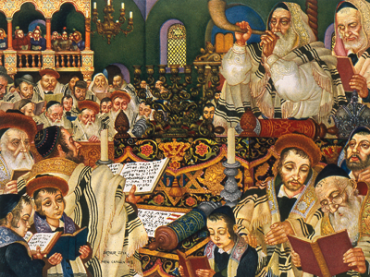Jewish Studies
Jewish Studies is an interdisciplinary field studying Jews and Judaism in all of their geographical, cultural, social, economic, historical, political, religious, and linguistic contexts, from Late Antiquity through the modern period. The Judaism in Context series features monographs and edited collections that traverse the wide landscape of Jewish Studies.
Recently viewed products
-
I Fasti della Chiesa Patriarcale Antiochena
-
Anglican Liturgical Inculturation in Africa
-
The Beginnings of the Theological Seminary of the Reformed Church in the United States
-
Grammatik der neusyrische Sprache
-
Dimitrie Cantemir and the Islamic world
-
Die Enjanehirmen der berliner Handschrift Sach. 349
-
Syriac Silk Ties - Limited Edition
-
Journal of the Canadian Society for Syriac Studies 18
-
Ambrose of Milan's On the Holy Spirit
-
Armenische Studien













